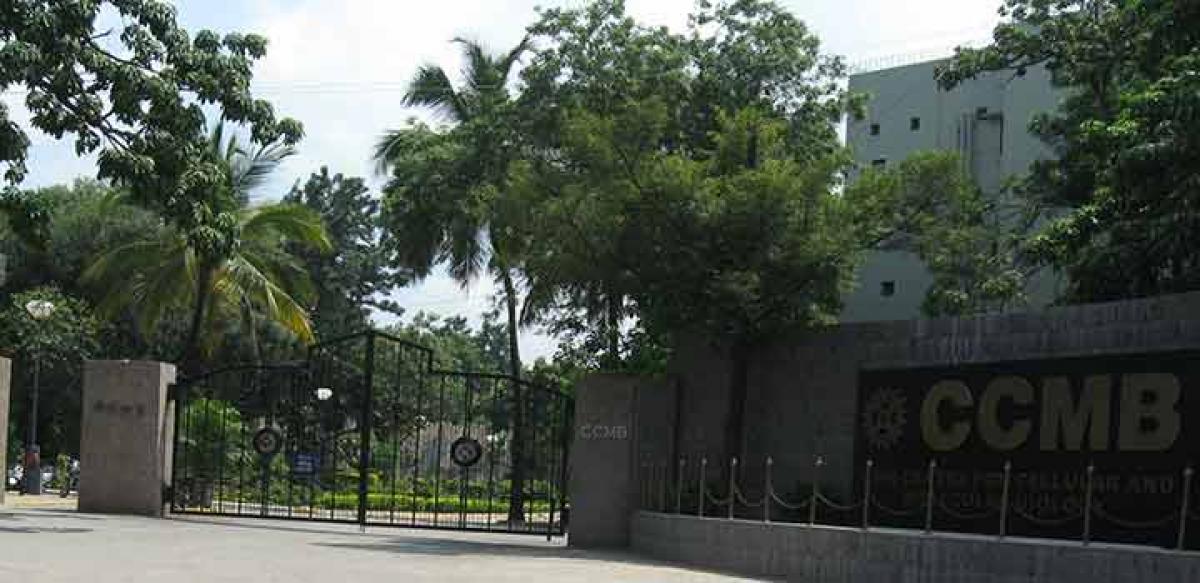Live
- BJP MP candidate Bharat Prasad visited the student who tried to commit suicide
- PM’s popularity in the fast lane: Autos with 'Har Dil Mein Modi' slogan spotted across Delhi
- Delhi-based political parties are like East India Company: Sukhbir Badal
- Golf: Diksha moves into Top-20 at South African Women’s Open
- KCR lashes out against BJP and Congress for destroying Telangana
- Dairy Science students visited the Milk cooling plant
- Moody feels Pant ahead in keepers’ race for T20 WC squad; Srikkanth picks Rahul over Samson as reserve keeper
- Thanking voters for extending 'unparalleled support' to NDA, PM Modi says second phase 'too good'
- Natural Relief for Menstrual Cramps: Beetroot Juice Recipe
- Asha Worker died in a road accident
Just In
Europeans trace their ancestry to 3 ancient populations: Study


Researchers have compared ancient hunter-gatherers and early farmers to present-day human genomes and found that Europeans today trace their ancestry to three ancient populations. The international research findings have been published in Nature journal calling it \'Melting Pot - Three Ancestral Populations for Modern Europeans’.
Senior CCMB scientist Dr Kumarasamy Thangaraj, who was part of the study, stated that Europeans have a complex prehistory and there was constant cross-breeding between Europeans and individuals from various Asian populations over the last 30,000 years
 Researchers have compared ancient hunter-gatherers and early farmers to present-day human genomes and found that Europeans today trace their ancestry to three ancient populations. The international research findings have been published in Nature journal calling it 'Melting Pot - Three Ancestral Populations for Modern Europeans’. Indian scientists from the CSIR-Centre for Cellular and Molecular Biology (CCMB), Hyderabad, were also involved in the study with Dr Kumarasamy Thangaraj, senior principal scientist being one of the authors of the study.
Researchers have compared ancient hunter-gatherers and early farmers to present-day human genomes and found that Europeans today trace their ancestry to three ancient populations. The international research findings have been published in Nature journal calling it 'Melting Pot - Three Ancestral Populations for Modern Europeans’. Indian scientists from the CSIR-Centre for Cellular and Molecular Biology (CCMB), Hyderabad, were also involved in the study with Dr Kumarasamy Thangaraj, senior principal scientist being one of the authors of the study.
The study shows that present-day Europeans are descendants of at least three different groups and that they have a far more complex prehistory than the traditional tale of our descending from homo sapiens, who came and conquered some 40,000 years ago.
Archaeological evidence suggests that the transition to a farming lifestyle in central Europe occurred around 7,500 years ago, with the appearance of the Linear Band Keramik (LBK), a sedentary farming culture.
Professor Rasmus Nielsen of the University of Copenhagen and the University of California at Berkeley in the United States is enthusiastic. He points out that even more genetic history could be brought to light in coming years.
"In my opinion it is quite probable that there was more constant cross-breeding between Europeans and individuals from various Asian populations over the last 30,000 years, particularly Siberian, Middle Eastern, and Caucasian," he says.
Recent genetic studies on ancient hunter-gatherers and early farmer remains have suggested a massive migration of people to Europe coinciding with the spread of farming. The size and distribution of the genetic components contributed to indigenous European hunter-gatherers, however, remain unclear.
“In order to compare the ancient humans to present-day people, the team also generated genome-wide data from about 2,400 humans from almost 200 diverse worldwide contemporary populations, including the enigmatic tribal population of Andaman and Nicobar Islands,” says Dr Kumarasamy Thangaraj, one of the authors of this study and senior principal scientist at the CCMB.
"By analysing the genomes of contemporary populations, we have previously found that the present day Indians have emerged from two ancestral populations (ASI-ancestral south Indians and ANI-ancestral north Indians); while ASI do not have any genetic affinity outside India, ANI showed up to 70 per cent genetic affinity with Europeans. However, it would be interesting to see that which one of the three ancestral European populations is related to ANI,” said Dr Lalji Singh, former director, CCMB, and one of the authors of this study.

© 2024 Hyderabad Media House Limited/The Hans India. All rights reserved. Powered by hocalwire.com






